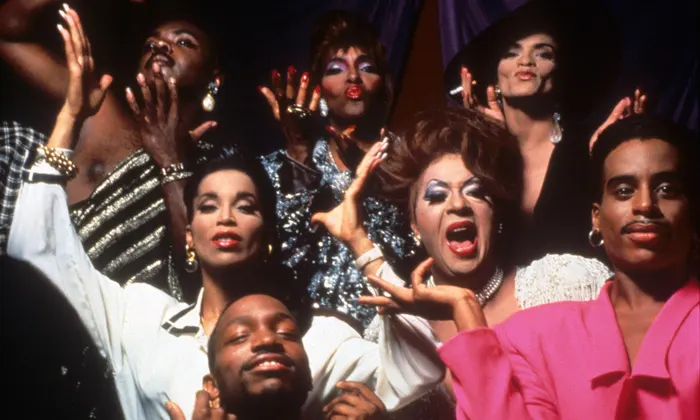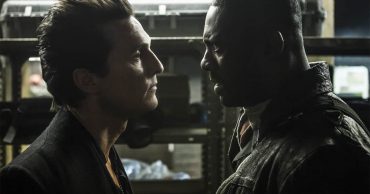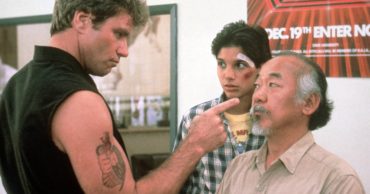
Sexuality and gender are important themes in film because these themes establish the differences that exist between human beings beyond long-established heteronormative viewpoints and societal norms that have long-established optics that classify humanity as one set model. It is important to promote expansive filmgoing experiences about these social themes in cinema to help foster more understanding beyond nationalistic vernaculars, such as the strong focus on heterosexual culture in the United States as a majority, and to educate students on the wide-ranging themes surrounding gender, be it feminism and struggles against long-established patriarchal models in society, or the long-overdue rise of representations and voices from transgendered individuals.
The New Queer Cinema Movement that started in the early 1990s is worthy of consideration for those seeking dynamic film storytelling because this movement allowed visual artists to create films that explored pertinent themes in LGBT and gender rights representations that provided an educational visual record of these important contemporary themes in everyday life. With that in mind, let’s take a trip through LGBTQ film history to explore pioneers in this genre and the lasting legacy of how queer films have paved the road for more open examples of storytelling in film today.
The Early Years
For decades, LGBTQIA characters were typically delegated to stereotypical supporting roles in cinema. In the 1970s, the independent film movement began to take off in the Western world, and with this a revolutionary approach to films that explored realist and gritty themes. Films that explored LGBTQIA characters in leading roles and narratives took off in the 1980s and these films mostly paid attention to the l (lesbian) and g(gay) monikers in LGBT.
The vast fluidity that is often seen within sexuality and gender was notably absent from the rise in LGBT cinematic storytelling in the 1970s and 1980s, but a movement known as “New Queer Cinema” sought to change this established narrative in the early 1990s. The New Queer Cinema Movement was begun by LGBT filmmakers who wrote stories and made films that explored sexuality and gender not as static and wholly cisgender representations, but as the broad spectrum of overlapping sexualities and gender identities that represent the real dynamics of sexuality and gender.
This cinema movement also coincided with the rise of third-wave feminism in addition to exploring art and realism in the LGBT community in post-Reagan and Thatcher United States and the United Kingdom, as well as some of the first films that took an unflinching and realistic approach to the ravages of the HIV/AIDS virus. The New Queer Cinema movement represents a way to establish the importance of film studies through scholarly analysis and lecturing, which in turn can provide a substantial and discursive debate about sexuality and gender in the humanities.
With proper research and examples, a topic such as the New Queer Cinema movement can also help to break down the barriers within humanities studies that may place film studies and literature in competition with others. Both concentrations are pivotal as art forms, and arguing that sexuality and gender have powerful representation in recent cinema history, can promote healthy and important debates in a rapidly rising visual world.
The New Queer Cinema Movement Explained
The New Queer Cinema Movement was able to combine a myriad of concepts that appear in contemporary humanities, such as feminism, the intersections between ethnicity and race, as well as what it means to be a varied human in a postcolonial world, especially when looking at cinema offerings from around the world or, the Third World that saw the rise of a Third Cinema to correspond to this type of revolutionary artistic license to tell stories that shattered the illusion of the colonial status quo.
But even in these many film movements, characters and storylines that explored what it means to be female, trans, or even a male that did not fit a masculine ideal were few and far between, to say nothing of the limited amounts of films that were bold enough to include LGBT or transsexual characters. Kimberly Pierce’s Boys Don’t Cry was released into American theaters at the end of the 1990s, an era when third-wave feminism and a wide array of LGBT films were saturating the independent film market.
Hilary Swank portrayed real-life Brandon Teena, a trans man who was brave enough to live his authentic self in the rural and close-minded plains and desolate towns of Nebraska in the early 1990s. Brandon lives his identity as a man and even falls in love with a hetero woman who later discovers Brandon’s female birth identity and refuses to allow this to ruin their relationship. Brandon eventually meets an untimely demise once the local males discover that Brandon was born as a female and their indoctrinated hate that stemmed from close-minded society through an upbringing that continued the hate reveals itself as a form of toxic masculinity once the local men decide to violently rape Brandon before murdering him in cold blood.
The repression of homosexuality as a construct, as opposed to a natural state of being at birth, is revealed through this grisly act but also a level of misogyny since the revelation that Brandon has female anatomy sends the men into a frenzy of domineering toxicity that reveals how women are nothing more than tools by which to achieve pleasure and meet their needs. The film shows how hate is taught based on environmental and societal practices, and the notion of the other exits within the same status of femininity under the grinding levers of the patriarchy.
What films like Boys Don’t Cry can teach us is that the notion of a male gaze or, a male ethnographic phenomenon, is patriarchal in essence but also a dark side of patriarchal dominance that exists within society. Corrin Columpar writes, “the male gaze consolidates a relationship between power and visuality, yet also features its own ideological and institutional origins”. A film like Stephen Frears My Beautiful Laundrette shows how this male gaze has become twisted in that two men, who both are working-class and gay, as opposed to a stereotypical notion of the feminine that many heterosexual men mistakenly associate with all gay men due to ignorance of variable traits and identities, is shocking to the perceived notion that working-class men in Margaret Thatcher’s class-based Britain of the 1980s cannot possibly be gay and in a loving relationship as opposed to just a sexual transaction for gratification, which is acceptable granted that inebriation occurs and no suitable woman is available to service their needs.
This film and others like it reveal how toxic masculinity and pathetic double standards reveal the notion of hate for the other in society as represented through cisgender gay men in this film, which also exists hand-in-hand with misogyny since women are reduced to the notion of the feminine and any sort of relationships with the notion of the feminine is only permissible if a person’s biology and their identity match the notion of the feminine.
Trans Representation
Films like this are able to reveal this toxicity that exists within society through an art form that is more readily present and visual thanks to the artistic contributions of filmmakers and performers. Boys Don’t Cry shows that the hate exhibited turns to sexual violence since Brandon’s anatomy is female, which also allows the buried homophobia to come to the surface as authentic repressed sexual attraction to the same sex that can only be excused if rape and subsequent murder of the individual take place. The identity of the trans woman also exists within the same world of toxicity exhibited by the masculine.
The Adventures of Priscilla, Queen of the Desert (1994) explores the typical road movie trope as a group of Australian trans women tour across the rural Australian outback to reach a performance destination for their drag show in Alice Springs. Across the journey, the women meet a cornucopia of rural-living citizens, some of whom accept the troupe with friendliness and warmth, and yet others who bring bigotry and malice towards the performers. This film positions itself between the intersection of the comedic fish-out-of-water cinematic story as well as a profound mediation of the bonds of friendship, camaraderie, and perseverance inside of a 1990s society that was reconciling itself with the more streamlined existence of LGBT rights, representation, and pride and the old world auspices of bigotry.
But this film managed to take a more lighthearted approach to the journey of trans representation into an origin moment in cinema that would produce a long-running amount of trans woman stories that used slapstick while ignoring the reality of what it means to live as a transwoman in the West. According to F. Hollis Griffin, “many LGBT movies explore the aesthetics of Hollywood’s invisible style, telling stories about sexual minorities through mundane narratives and formal systems”. Although a film like The Adventures of Priscilla, Queen of the Desert undoubtedly explores the notion of camaraderie and friendship and manages to avoid the stereotypical tragic style of ending that always sought to end an LGBT film with the death of a character, it can be said that the slapstick approach missed the entire point of what it means to live as a transwoman with all of the nuances and prejudices that existed in the 1990s.
Paris Is Burning (1990): A Retrospective
Paris Is Burning (1990) is a classic documentary that explores both a particular place and time in NYC in the late 1980s, as well as a specific communal experience that was created and celebrated by LGBT African American and Latino men. That’s just a summary of what vogue and ballroom culture were in this era, but through Jennie Livingston’s unique and heartfelt film, we get an intimate portrayal of what this community culture looked and felt like.
A community can be united through a specific form of culture that unites groups of people through shared passions and aspirations, and a community can also be the uniting of individuals through shared components of identity, ideology, self-expression, or more pertinent things like sexuality and gender. The aspect of community in Paris Is Burning falls into both of these aspects. Ballroom culture and voguing are shared cultural trait that unites the performers, but also the community can describe the shared traits of the performers through LGBT representation, social dynamics that came from that during Reagan and Bush’s America, the shared struggles with HIV/AIDS at this time, as well as all of the traditional notions of family, companionship, and even competition.
In the film, there is a section where performers speak about what ballroom culture is and what it means to the mostly minority LGBT performers who participate in the culture. One subject speaks about how predominantly white and heterosexual culture shares community over things like football and sports, and positions ballroom culture as exactly the same kind of communal experience for ballroom culture participants as sports and largely patriarchal activities are to the white classes and fervent heterosexual communities. Ballroom culture is a special and sacred part of life for this community, and this also speaks to how communities of our own memberships impact our lives and make life itself a more harmonious and livable odyssey.
It is in this that the performers and individuals of ballroom culture present a stark contrast to the glaringly archaic and woefully staid and troublesome communities that seek to preach heterosexual and small-minded values throughout most of the nation during the 1980s. The performers imitate popular culture categories and social trends and filter those through a hybrid reality that manages to celebrate social tropes and pop culture, but also to carve out a new identity for LGBT performers who were frequently shut out of any of those dominant corporatist industries–be it entertainment or fashion. The community of Paris Is Burning is incredibly close-knit, just as in the fictitious The Adventures of Priscilla, Queen of the Desert, and this stems from both a shared love of the culture they have created and the bonds that form when you live within a minority group that is crushed under the weight of hypocritical moral policers of thought and lifestyle choices.
HIV/AIDS, Existentialism, and the Work of Gregg Araki
It is through film studies that we can see examples of this spirit of community that exists within minorities, yet it is also through the scholastic study that we can see numerous films during the New Queer Cinema Movement that showed the grim reality of tragedy, by which the HIV/AIDS crisis was raging during the dawn of the movement. This epidemic still ravages societies across the world, but during the worst parts of the crisis before the release of medications, the virus not only ravaged the LGBT community, it also tipped the prejudices against LGBT individuals to astronomical levels across the globe.
Norman Rene’s Longtime Companion (1990) is a film that focuses on a group of affluent gay men that are one-by-one ravaged by the virus in late-1980s America. When compared to Paris Is Burning, this film can serve as a companion piece to that nonfiction film as an example of how the virus had no preference for skin color or social status, the virus was concerned with destroying LGBT communities, and the austerity of prejudice concerning same-sex couples was widespread and two-fold.
The characters in the film are shown to be in loving and normal relationships just as any heterosexual couple, that is diagnosed with the virus, live with the fear of the certain death sentence that the news brings, the extreme pain of the sickness, and finally, in highly emotional and visceral scenes, the parting of sick partners from their loved ones when death comes calling. The virus was the antagonist of many films like Longtime Companion with the New Queer Cinema movement, and these stories were important to tell, but the arrival of Asian-American filmmaker Gregg Araki in the early 1990s would present an alternative point of view to victimization and sentimentality: a more nihilistic and angry worldview with a series of LGBT protagonists.
Araki’s The Living End (1992) tells the story of Jon and Luke, both of whom are HIV positive at the time of the virus that came with a fairly rapid expiration date. But Jon and Luke are not the typical protagonists audiences came to expect in cinema at the time–they do not obsess over and fall into an existential crisis over the virus and its implications; they undertake a reckless abandon road trip that explores more deeply the existential crisis humans encounter with facing mortality.
The film’s preoccupation with death and control over death is the less obvious, but more pervasive AIDS-related theme of the film. Indeed, Araki’s film allows us to see gay protagonists that are grappling with a human existential problem; death, rather from AIDS or old age warmly in a bed, is the age-old dilemma we all face, and anger and reckless abandon exhibited by Jon and Luke is an outlet for anger that may not be audience-friendly for the masses, but a pertinent and relatable emotion humans feel when they receive news that threatens their very existence. Gregg Araki would also explore a more nihilistic-driven form of New Queer Cinema that moved away from victimization and allowed LGBT characters to express their rage without settling into hallmark card sympathies and passing condolences tinged with ignorant bigotry.
Totally F***ed Up (1993) takes a more realistic look at the lives of LGBT youth in an almost cinema verite type of filmmaking process, where real LGBT youth comprised most of the cast of the film. Authentic, lived experiences from the best parts of philosophical concepts within the humanities, and Araki’s contributions to the New Queer Cinema Movement succeed at capturing this authenticity for a more veritable entry into what film studies can offer by way of insights regarding LGBTQIA individuals. This film is documentary-like in nature, and simply follows early-1990s LGBT youth over a few weeks into the trials and tribulations of their lower-middle-class lives.
Similarly, Araki’s The Doom Generation (1995) follows a similar exploration into the nihilistic road movie, with the addition of male and female heterosexual protagonists who help a bisexual drifter after he robs a convenience store and kills the cashier. Rose McGowan’s Amy is an example of third-wave feminism in that she celebrates her sexuality and sexual self-expression in a society that is quick to label her behavior as slutty. This film shows that the intersection between LGBT representation is also symbiotic with the wider need for representation to break down barriers in the small-mindedness that permeates Western society.
Legacy
The New Queer Cinema Movement also explored themes of abuse and prostitution with the need to moralize or diminish these themes within the wider close-minded auspices of judgemental societal viewpoints. Todd Haynes’ Poison (1991) tells the story of a gay teenager who successfully escapes from his sexually abusive father. Gus Van Sant’s My Own Private Idaho (1991) explores the relationship between two young men, one gay, the other curious, who turn to prostitution as more of a rebellion and escape due to the inability of two men to live openly in a relationship in society.
Gregg Araki’s Mysterious Skin (2004), released towards the end of the New Queer Cinema Movement, shows how sexual abuse in childhood does not translate to or correlate to homosexuality despite small-minded opinions within society that always correlate the two and risk diminishing the pain of sexual abuse victims in favor of attacking LGBT identities. By highlighting the New Queer Cinema Movement as an example of the tangible power that film studies can bring to the wider humanities, film studies can stand within what Julie D’Acci describes as “the study of culture and those who fought for the inclusion of cultural inquiry into more traditional canons of curricula.”
New Queer Cinema can be credited as helping film audiences move away from a more hetero gaze when it comes to LGBT characters and to a more realistic dynamic that explores the lives of LGBT people as an authentic and tangible lived existence, typically inside of a majority prejudiced society. The visual record of these stories is forever preserved in film history which film studies can provide to viewers through the humanities, and can always serve as a reminder of where society was at for such a long period of time, and the struggles that existed to bring vitality to queer experiences, and not hetero-normative perceptions of what LGBTQIA life must be like through the eyes of ignorant, surface-level, unimaginative and dangerous thinking. classic documentary
 Follow Us
Follow Us




